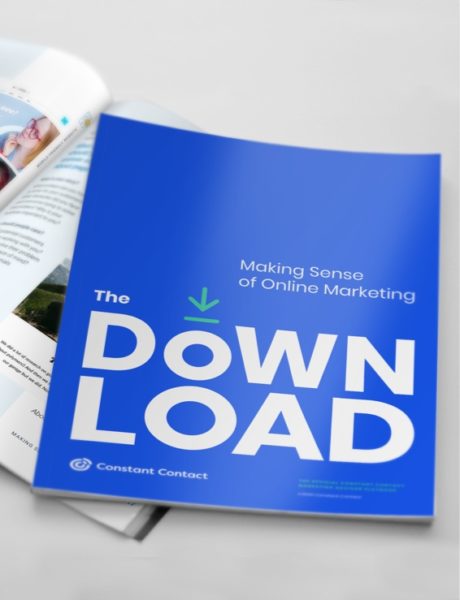
You’re not a spammer.
You value customer relationships and work hard to build trust with your customer base. You know it’s possible to email market without spamming and you’re careful not to spam your subscribers.
But even with all the work that you’re doing, you’re still seeing a handful of spam complaints when you send your email marketing campaigns and may be wondering how to avoid your email being marked as spam.
Don’t worry — in this article, I’ll explain why your emails might be going to spam, plus my best advice for how to avoid emails going to spam.
Why are my emails going to spam?
The truth is that email deliverability is huge. In fact, 17% of emails don’t make it to a subscriber’s inbox. That’s why it’s important to use a trusted email provider that optimizes something called email deliverability.
Simply put, email deliverability is the percentage of emails you send that are successfully delivered to your subscribers’ inboxes. You’ll want to use an email marketing platform like Constant Contact that works with internet service providers and monitors various email clients to ensure the best possible deliverability for your emails.
Apart from email deliverability, there are some simple things you can do to help avoid your emails going to spam. Let’s take a look at my top 6 recommendations below.
6 tips for how to avoid emails going to spam
Because email spam reports are often a matter of opinion — someone receives your email, decides it is unwanted, and clicks to “report as spam” — it can be difficult to figure out what you’re doing wrong.
While there’s no foolproof system for avoiding emails going to spam completely, there are certain warning signs you can watch out for as you prepare to send your next email campaign.
Let’s take a look at 6 common do’s and don’ts to avoid emails going to spam.
1. DO: Always ask for permission
People open email from people they know, and they delete or mark as spam email from people they don’t recognize. It’s really that simple.
Permission-based email marketing is the best route to developing long-lasting email marketing relationships. When you ask permission, you’re able to build a list of people who are interested in your business and are excited to hear from you. They’re more likely to open your email, less likely to mark it as spam, and will stay with you longer than contacts that are added without consent.
Asking permission also keeps you in compliance with legislation such the Controlling the Assault of Non-Solicited Pornography and Marketing Act (CAN-Spam), Canadian Anti-Spam Legislation (CASL), and GDPR.
2. DON’T: Hide your identity
Even if you ask for permission, if people can’t recognize that your emails are coming from you, they could still mark your emails as spam.
An easy fix to this problem is to use a familiar from name and from email address. If you have an email address that includes your business’s website, choose that address over one from a personal account.
Another easy fix is to add your branding to the emails you send out. Include your logo in a prominent location at the top of your email and choose colors that represent your business.
3. DON’T: Send irrelevant content
Your email content doesn’t have to be bad or offensive to be marked as spam. Often, the worst offense you can commit is to include content that simply isn’t interesting or relevant to the people you’re trying to reach.
Even if people aren’t marking your emails as spam, if they aren’t interested in what you’re sending it’s likely that they will send your emails to trash without giving you a second thought.
Pay attention to what’s working with your audience. Look at your email reports to see which content is getting the highest number of clicks. If you’re still not sure what people are interested in, ask them! You can use an online survey to collect feedback from your audience or update your sign-up form to include options for people to choose when signing up.
And you’ll likely find that not all of your subscribers are interested in the same content. In that case, learn how to segment an email list into several groups, so you can send each group the content that’s most relevant to them. Don’t worry! Segmenting a list is easy if you’re using a marketing platform like Constant Contact.
4. DO: Keep your promises
When someone signs up to receive your email communications, they do so with the expectation of receiving something of value. If you don’t communicate clearly what that value is — or if they are signing up for one thing and receiving something different — you could be putting yourself at risk.
Give subscribers clear expectations before they share their email address. Let them know how often they’ll be hearing from you, what type of information they’ll receive, and why it’s a good idea to sign up.
Then, set up a welcome email series to re-affirm their decision and remind them about what they’re going to receive.
5. DON’T: Overwhelm your audience
Selling your products or services is an important part of email marketing, but if you’re sending too much promotional material you could be driving some people away.
This is why it’s so important to find a balance in the type of content you send out. As a standard, we recommend 80 percent helpful/informative content and 20 percent promotional.
When you are including promotional content, make sure it’s timely and relevant to the person you’re trying to reach. People are much more receptive to promotions if it helps them solve a problem they are faced with at that time.
Finally, keep an eye on your overall sending frequency. Even emails that are jam-packed with helpful content can be viewed as spam if you’re sending too frequently.
6. DO: Make it easy to opt-out or unsubscribe
You heard that right — you want to make it easy for subscribers to unsubscribe from your emails. Of course, you’d prefer they not unsubscribe, but ultimately, an unsubscribe is much better than someone marking your email as spam.
And often, people will mark email as spam because they simply want to unsubscribe from a list.
While it can be difficult to let go, if you have people who aren’t interested in receiving your emails, it’s better to give them the option to opt-out than to try to keep them on your email list.
If you’re a Constant Contact customer, there will be an unsubscribe link in every email you send out. Also, make sure to monitor the inbox for the address you are using to send your email campaigns, as many people will reply to your email and ask to be taken off your list.
If you’re focused on providing value to your email audience and are taking the right steps to obtain permission, you’re already on the right track to avoiding spam complaints.
Hopefully, these tips help you avoid emails going to spam
Looking for additional email marketing advice? Get our guide, The Download. It can help you make sense of online marketing.





